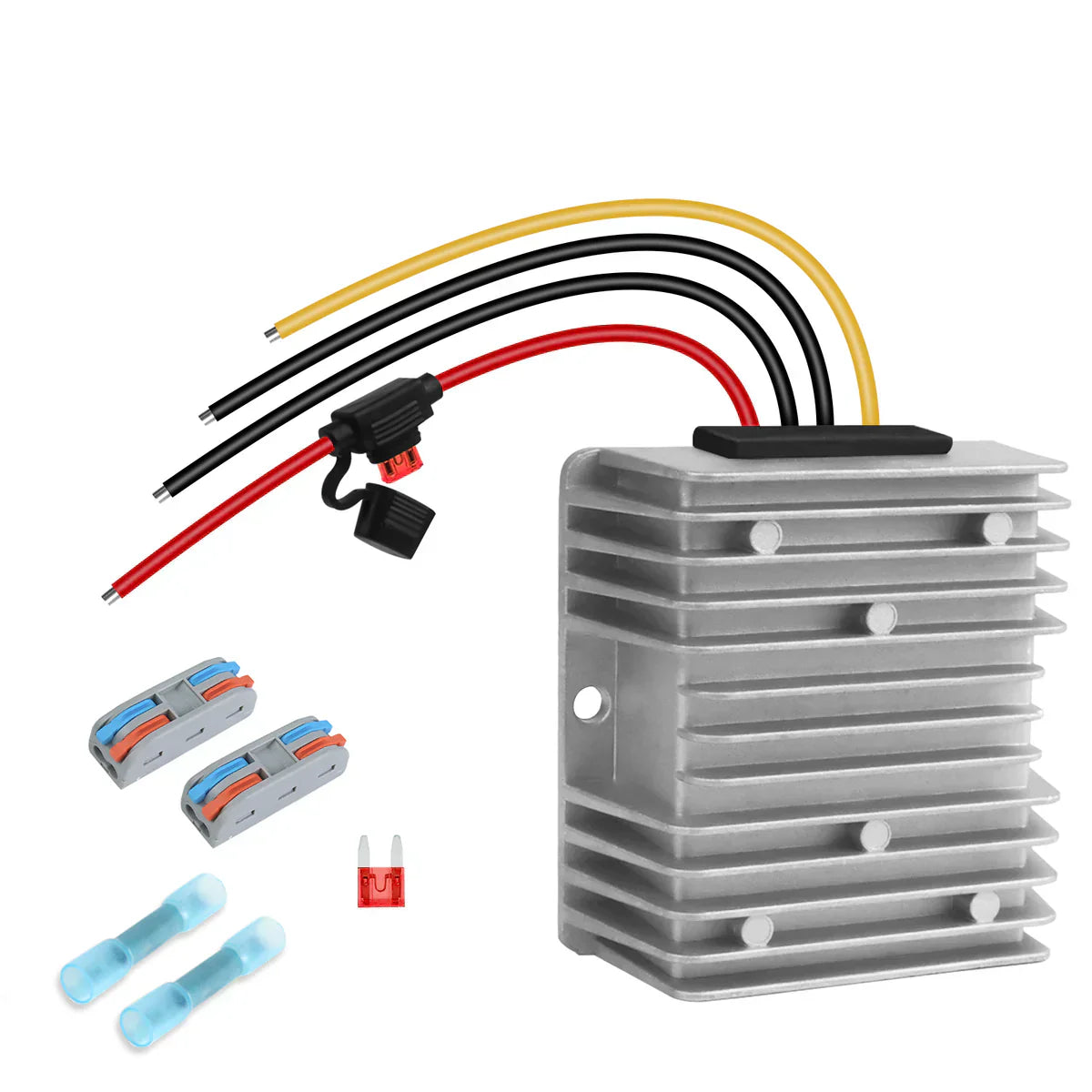In modern LED lighting systems, power stability is one of the most critical factors for maintaining optimal brightness performance and long service life. As smart lighting, outdoor signage, automotive illumination, and industrial applications demand increasingly reliable power solutions, the DC-DC Step-Down Converter (Buck Converter) has become a key component for ensuring consistent voltage and system safety.
This article provides an in-depth look into how DC-DC converters work, their essential design principles, and their performance advantages in LED systems.
1. Why LED Systems Require Voltage Step-Down Conversion
LEDs (Light Emitting Diodes) are highly sensitive to both current and voltage fluctuations. Even minor voltage instability can result in flickering, inconsistent brightness, or even permanent damage.
In many lighting installations, the power source provides 24V, 36V, or 48V DC, while the LED modules or control units typically require only 12V or lower. To ensure proper operation, a DC-DC Step-Down Converter is used to reduce the higher input voltage to a safe and stable level suitable for the LEDs.
2. Working Principle of a DC-DC Step-Down Converter
A Buck Converter efficiently converts a higher DC input voltage into a lower DC output through the coordinated action of switching components (such as MOSFETs or transistors) and energy storage elements (inductors and capacitors).
The process involves three main stages:
-
On-State: When the switch is ON, current flows through the inductor to the load, storing magnetic energy.
-
Off-State: When the switch turns OFF, the inductor releases the stored energy, maintaining current flow through a diode.
-
Voltage Regulation: By adjusting the pulse width (PWM duty cycle), the converter controls the average output voltage with high precision.
This switching technique offers high efficiency, low heat generation, and compact size, making it ideal for long-running, energy-efficient LED lighting systems.
3. Key Advantages in LED Applications
1. Enhanced Voltage Stability
Even when the input voltage fluctuates, a step-down converter maintains a steady output, preventing LED flicker and brightness variation.
2. Lower Energy Loss and Heat
High-efficiency conversion reduces heat buildup, extending both the LED driver and light lifespan.
3. Greater System Compatibility
Different LED modules, controllers, or sensors often require various voltage levels. A DC-DC converter allows seamless voltage matching between components.
4. Built-in Protection Features
Premium converters include over-voltage, over-current, short-circuit, and waterproof (IP68) protection, making them ideal for outdoor lighting, vehicles, and harsh environments.
4. Common Application Scenarios
-
Outdoor LED Billboards: Use a 48V main supply with a step-down module to stably power 12V LED strips over long distances.
-
Golf Carts and Automotive Lighting: Convert 36V or 48V battery output to 12V for headlights or accessories.
-
Garden and Landscape Lighting: Employ waterproof DC-DC modules to maintain uniform brightness across different lamp types.
5. Recommended Products: High-Efficiency Waterproof DC-DC Converters
If you’re looking for reliable, waterproof, and easy-to-install converters suitable for various LED lighting systems, the following models are highly recommended:
-
DC 36V–48V to 12V Step-Down Converter
Available output options: 10A / 15A / 20A / 30A
IP68 waterproof design with built-in fuse and quick-connect terminals. Perfect for golf carts, e-vehicles, and outdoor LED systems.
👉 View Product -
DC 24V to 12V Step-Down Converter
Available output options: 10A / 15A / 20A / 30A
Featuring IP68 waterproof and dustproof protection, this model provides highly efficient, stable output for 24V-based LED setups.
👉 View Product
6. Conclusion
DC-DC Step-Down Converters play an indispensable role in LED systems — ensuring voltage stability, improving energy efficiency, and extending product lifespan.
As lighting technology continues to advance and integrate with smart and renewable systems, selecting a high-quality converter is no longer optional but essential. A well-designed voltage converter not only guarantees consistent illumination but also contributes to sustainable, long-lasting lighting performance.

